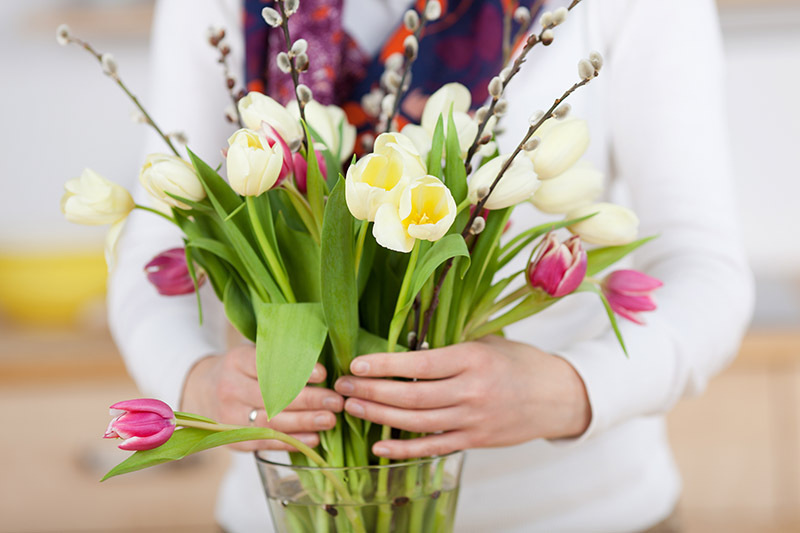Discover the Magic of Tulips with Seven Fascinating Facts
Posted on 22/08/2025
Discover the Magic of Tulips with Seven Fascinating Facts
Tulips are more than just beautiful flowers adorning fields, gardens, and homes across the globe. With their diverse colors and elegant shapes, tulips have enchanted people for centuries. In this article, we will explore the captivating world of tulips and unearth seven fascinating facts that showcase the magic and charm of these beloved blossoms. Whether you are a gardening enthusiast, a flower lover, or someone seeking inspiration, discovering the wonders of tulips will surely brighten your day and deepen your appreciation for nature's artistry.

The Enduring Allure of Tulips
Tulips are synonymous with spring and symbolize renewal, hope, and the promise of warmer days. Since their introduction into European gardens in the 16th century, they have captured the imagination of artists, gardeners, and florists alike. Today, tulips remain a favorite subject of floral arrangements, vibrant festivals, and stunning landscapes, especially in the Netherlands, which is often called the land of tulips.
Let's uncover the hidden stories and remarkable facts that make tulips truly magical.
1. Tulips Have a Surprising Origin Story
The Central Asian Roots of Tulips
While tulips are mostly associated with the Netherlands, their true origins lie far to the east. The tulip flower originated in the rugged mountains of Central Asia, especially in regions covering present-day Kazakhstan, Iran, and the steppes of Mongolia. Early on, wild tulips grew naturally in these harsh, diverse climates, where they evolved their distinct cup-shaped petals and brilliant hues to endure the elements.
Tulips' Journey to Europe
- The first documented cultivation of tulips came from Persian and Ottoman gardens, where the flowers adorned royal courtyards and inspired intricate motifs in art and textiles.
- Tulips made their way to Europe in the 16th century, thanks to the passionate botanist Carolus Clusius, who planted them in the botanical gardens of Leiden, Netherlands.
- Within decades, the European tulip trade was born, igniting both fascination and obsession across the continent.
2. Tulips Played a Starring Role in 'Tulip Mania'
One of the most intriguing chapters in tulip history is the economic phenomenon known as Tulip Mania in the Dutch Golden Age.
The World's First Economic Bubble
In the 1630s, the demand for unique and rare tulip varieties soared in the Netherlands. Some tulip bulbs became so valuable that they were sold for more than the price of a house! Tulip bulbs were traded on stock exchanges, and their prices skyrocketed.
However, this frenzy eventually collapsed, marking the first widely documented speculative bubble in financial history. While Tulip Mania had lasting economic consequences, it also cemented the magical allure of tulips as a symbol of wealth, beauty, and fragility.
3. Tulips Come in a Rainbow of Colors--Except Blue
If you are captivated by the breathtaking colors of tulips, you're not alone. Gardeners and breeders have cultivated thousands of tulip varieties in red, pink, yellow, orange, purple, and white.
However, one color remains elusive: Blue. Despite years of hybridization, true blue tulips do not occur naturally. Science and horticulture have created purple and violet-tinted tulips, but a pure, sky-blue tulip remains a dream for breeders and flower lovers alike.
Fun Fact: Black tulips, popularized in literature, are actually a very deep maroon or purple shade. The dream of the "perfect black tulip" continues to inspire hybridizers today.
4. Tulips Follow the Sun--A Magical Movement
Did you know that tulips exhibit a mesmerizing botanical behavior called heliotropism? Tulip flowers will gently move and turn their heads throughout the day to follow the sun. This sun-chasing movement helps the blossoms maximize sunlight exposure, enhancing both their growth and their visual appeal.
Tulips demonstrate this movement most vividly in the early stages of blooming, especially when they are grown outdoors. Indoors, you might notice your cut tulips bending and leaning toward a sunny window. This delightful dance adds to the enchanting magic of tulips and their dynamic relationship with the environment.
5. The Netherlands: World's Tulip Capital
Fields of Tulips as Far as the Eye Can See
When most people think of tulips, images of spectacular Dutch tulip fields instantly come to mind. The Netherlands is the leading producer and exporter of tulip bulbs and cut flowers worldwide.
- Every spring, millions of tulips bloom across the Dutch countryside, transforming landscapes into vibrant patchworks of color.
- Kuekenhof Gardens, known as the 'Garden of Europe,' features over 7 million tulips each year and attracts visitors from every corner of the globe.
- The annual Tulip Festival in Amsterdam is a celebration of Dutch horticultural heritage, creativity, and innovation.
Tulips Beyond the Netherlands
Today, tulips are grown and celebrated across the world, from Canada to Turkey and beyond. Yet, the unmistakable magic of Dutch tulip fields continues to inspire dreamy travel itineraries and countless photographs each spring.
6. Unique Symbolism and Meanings of Tulips
Tulips possess a rich tapestry of meaning that varies across cultures, making them one of the most symbolic spring flowers.
- Red tulips symbolize deep love and passion, making them a cherished Valentine's Day flower.
- Yellow tulips represent happiness, cheerfulness, and friendship.
- White tulips embody forgiveness, purity, and new beginnings.
- Purple tulips stand for royalty, nobility, and admiration.
- Variegated tulips, with multicolored petals, are often associated with beautiful eyes or admiration.
Tulips have also been revered in Persian poetry and used as an emblem of paradise and the ephemeral nature of beauty. Their versatility in meaning and expression only heightens their magic and timeless appeal.
7. Tulips Are Edible - But with Caution!
This surprising fact about tulips might catch you off guard: tulip petals are technically edible for humans. During times of famine, especially in World War II, Dutch citizens resorted to eating cooked tulip bulbs to survive. Some varieties of tulip petals can be used as a colorful garnish in salads or desserts, offering a subtle, pea-like flavor.
However, caution must be exercised: not all tulip bulbs and petals are safe to eat. Some can be toxic or cause allergic reactions. Never consume tulip bulbs from commercial growers, as they are often treated with chemicals. Always consult a botanical expert before experimenting with tulips in the kitchen!
Celebrate the Magic of Tulips All Year Round
From their enchanted origin story to their starring role in economic history and their unrivaled array of colors, tulips continue to fascinate and inspire us. By exploring the seven remarkable facts above, you can deepen your appreciation for the enduring beauty and significance of these flowers.
How to Grow and Care for Tulips
- Plant tulip bulbs in fall, 6-8 weeks before the ground freezes, for vibrant spring blooms.
- Choose a sunny, well-draining spot in your garden for healthy growth.
- Water thoroughly after planting, but avoid waterlogged soil to prevent rot.
- Tulips look stunning in beds, borders, containers, and even as cut flowers in a vase!
Tip: If you want to enjoy the magic of tulips indoors, purchase pre-potted bulbs or force bulbs to bloom inside for a burst of spring cheer at any time of year.

Frequently Asked Questions About Tulips
- Q: When is the best time to see tulips in bloom?
A: Tulips generally bloom in mid to late spring, but flowering times can vary based on your region and the tulip variety. - Q: How many species and hybrids of tulips exist?
A: Botanists recognize around 75 species and over 3,000 registered varieties or hybrids, each with their own unique charm. - Q: Can you plant tulip bulbs in containers?
A: Absolutely! Tulips thrive in well-drained containers and make an elegant addition to patios and balconies.
Conclusion: Tulip Magic Blooms in Every Petal
Tulips have cast their spell on civilizations for hundreds of years, weaving together tales of adventure, artistry, economics, and romance. Their magic lies in both their captivating beauty and their surprising stories, making them an ideal symbol of the wonders and mysteries of nature. As you admire a tulip's graceful form or stroll through a sunlit tulip field, remember these fascinating facts and let your imagination bloom right along with them!
Discover the magic of tulips for yourself by visiting a local garden, planting a few bulbs at home, or simply enjoying a vase of these classic spring flowers. The world of tulips is one of color, history, and endless fascination - just waiting for you to explore.
Latest Posts
The Ultimate Guide to the Top 12 Long-Lasting Blooms
Discover the Magic of Tulips with Seven Fascinating Facts
Steps to Keep Your Poinsettias Radiant Longer






